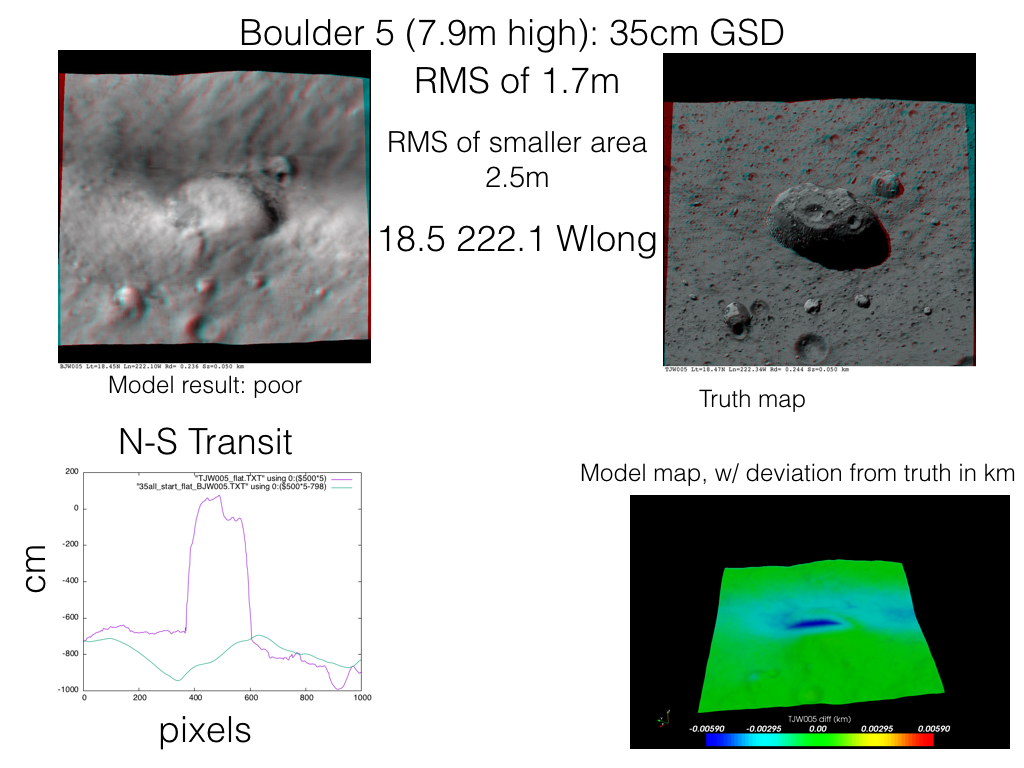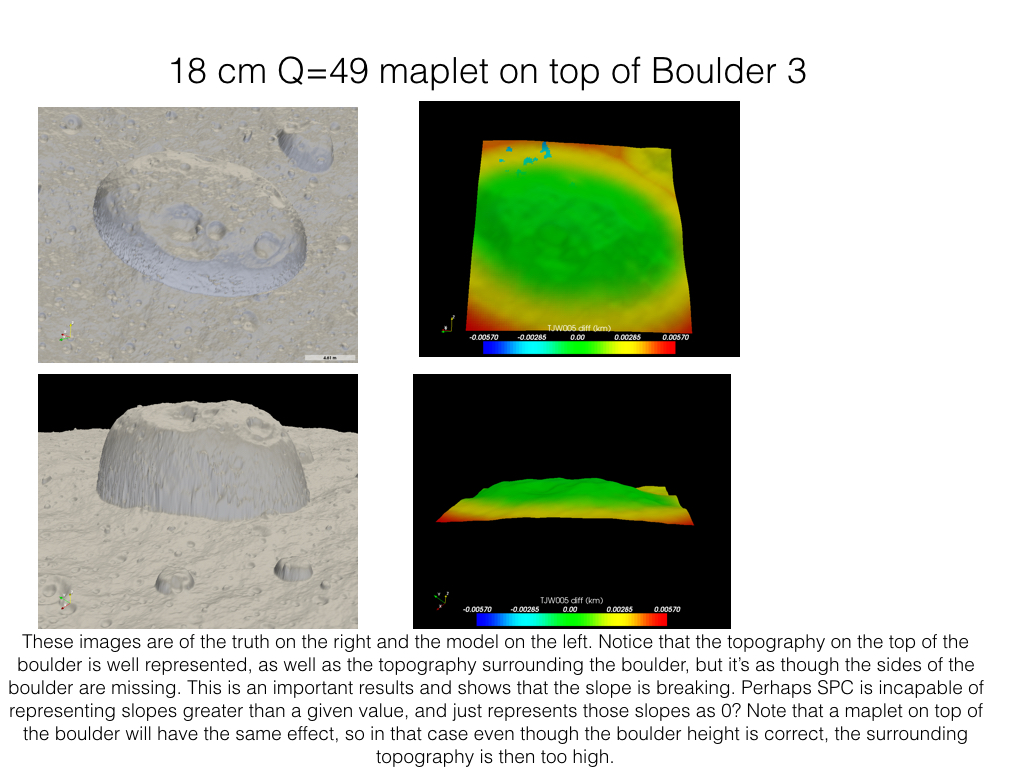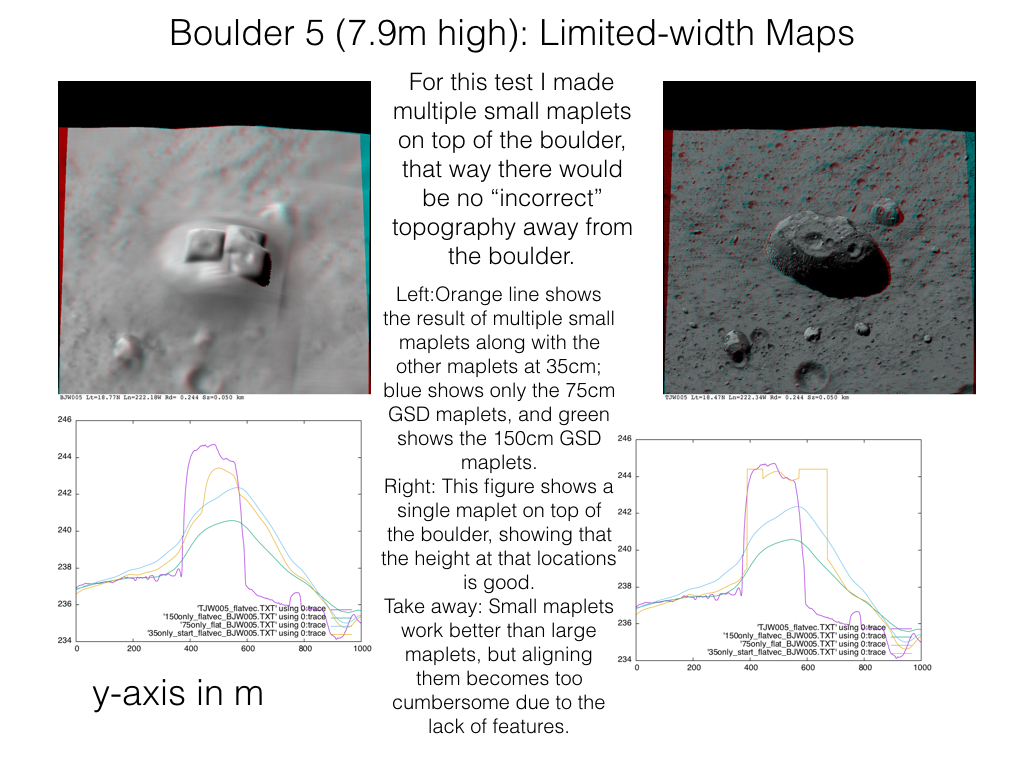Purpose of test: To look at individual maplets in detail, and to see what procedures we could use that are not usually implemented.
Results
Main thing we've learned is that because of overlaps, if there is no maplet with a center near the top of the boulder then the height of the boulder may not get represented very well. With the 35cm global shape model large boulders were not being represented because overlaps between maplets were not lining up, hence the boulder was not represented.
We learned that SPC doesn't represent steep slopes very well, so it would "break" at a boulder. We think perhaps the large slopes were simply represented as 0 slope. See the presentation where I show a single maplet on it's side. On top of the boulder small variations were represented, the edge of the boulder was not represented at all, and then the surrounding topography again had the small variations represented. So the result is a relatively flat map that represents small topography.
Bigmap doesn't have that limitation. If there are two maplets of different widths and different radius vectors, a near 90deg slope will appear at the boundary between the two maplets. See Presentation link below for an example. However, iterations (i.e. LITHOSP) over those maplets appears to smooth out that boundary. So Bigmap can represent steep slopes, but individual maplets cannot. Exploiting this concept allows us to manually force maplets into orientations that SPC apparently will not obtain on it's own. For example, if one were to create a steep slope via Bigmap between two maplets, and then generate a new maplet on that slope, you would then have a maplet that is roughly normal to the other maplets. This may be needed to properly represent boulders if SPC cannot generate the correct topography via the usual routes. However, this is a very time consuming task, and the end result is the boulder is very blocky. Perhaps after many iterations the blockiness will be smoothed over, but it will be tricky. Another problem with forcing the slopes via Bigmap is that overlaps have a hard time locking in. Without overlaps the different maplets don't get tied together, so the edges don't ever line up. Perhaps there are tricks I don't know about that will enable overlaps to lock in better.
We also tried putting several limited width maplets on the top of the boulder, and make sure these maplets do not spill over the edge of the boulder and result in incorrect topography. These maplets get close to the correct height because the v1 option will correctly solve for the height, but again getting overlaps to tie everything together is hard. Additionally, there are usually not very many features on the top of the boulder to work with, so it is hard to cover the top of the boulder with the limited width maps; there end up being gaps in the coverage.
Below are images made from the presentation









